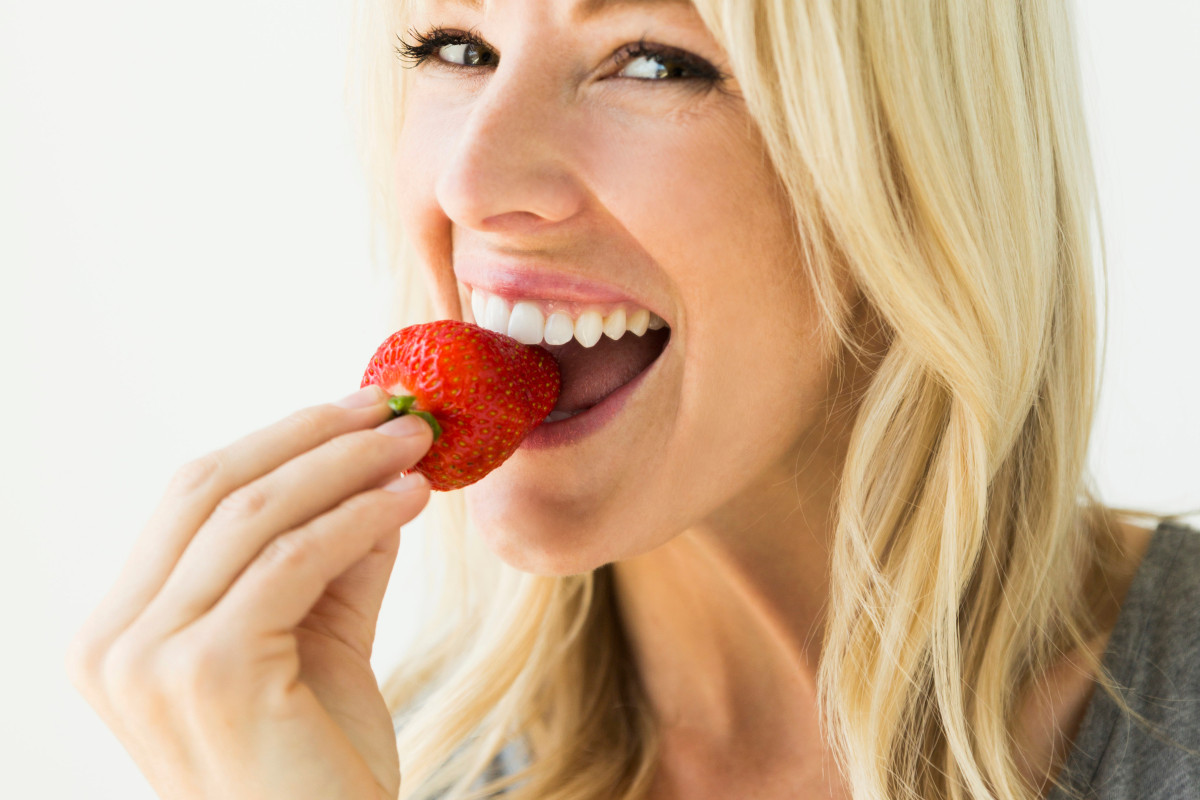Your cart is currently empty!
A bright, pearly white smile is something many of us aim for, but some of our everyday habits may be working against us. Even if you’re diligent about brushing, flossing, and regular dental visits, certain daily actions might still cause discoloration. Understanding what might be contributing to stains can help you keep your teeth looking their best. Here’s a look at five everyday habits that could be dulling your smile and some tips on how to counteract them.
1. Drinking Coffee, Tea, and Other Dark Beverages
Most of us start our mornings with a cup of coffee or tea, but these dark beverages are some of the biggest culprits behind stained teeth. Coffee, black tea, red wine, and dark sodas contain chromogens—color pigments that stick to enamel and create stains. Additionally, these drinks are often acidic, which softens enamel and allows stains to penetrate more deeply.
How to Combat It:
- Use a Straw: This helps limit direct contact between the liquid and your teeth, reducing staining.
- Rinse with Water: After drinking coffee or tea, rinse your mouth with water to wash away pigments before they settle.
- Switch to Green or White Tea: These are less likely to cause staining compared to black tea.
Pro Tip: Regular brushing is important, but avoid brushing immediately after consuming acidic beverages, as it can weaken enamel. Wait at least 30 minutes before brushing.
2. Eating Staining Foods Like Berries, Tomatoes, and Curries
Certain foods, while nutritious, can be notorious for staining teeth. Blueberries, blackberries, cherries, and other colorful fruits have natural pigments that cling to enamel. Similarly, tomato-based sauces and deeply pigmented foods, such as curry, are high in chromogens and acids, which contribute to staining.
How to Combat It:
- Pair with Teeth-Friendly Foods: Eat staining foods with crunchy, fiber-rich options like apples, carrots, or celery, which can act as natural scrubbers for your teeth.
- Drink Water While Eating: This will help rinse away pigments before they settle.
- Finish with Dairy: Dairy products like cheese can help neutralize acids and create a protective film over enamel.
Pro Tip: Rinse your mouth after eating these foods, or enjoy them as part of a balanced meal to reduce their impact on your teeth.
3. Smoking or Using Tobacco Products
Smoking and tobacco use are some of the biggest offenders when it comes to yellowing and staining teeth. Nicotine and tar found in tobacco leave dark deposits on teeth, which can lead to deep stains over time. Smokers also tend to develop a rougher tooth surface, which makes it easier for stains from food and drinks to stick.
How to Combat It:
- Consider Quitting: Quitting smoking or using tobacco products is the most effective way to prevent tobacco stains.
- Brush and Rinse Regularly: Frequent brushing, flossing, and mouthwash use can help minimize staining and keep your gums healthier.
- Opt for Whitening Toothpaste: Whitening toothpaste may help lift minor stains, but be cautious about overuse as it may wear down enamel over time.
Pro Tip: Professional cleanings every six months can make a big difference in removing tobacco stains, especially if quitting isn’t an option yet.
4. Using Certain Types of Mouthwash
Using mouthwash can be beneficial for oral hygiene, but some mouthwashes contain ingredients like chlorhexidine, cetylpyridinium chloride, and alcohol, which can contribute to staining when used over long periods. These compounds can react with other dietary sources, such as coffee or wine, making it easier for stains to set in.
How to Combat It:
- Choose Alcohol-Free Mouthwash: Alcohol-free and clear mouthwashes are less likely to stain teeth.
- Rinse After Eating, Not as a Replacement for Brushing: Use mouthwash after meals instead of relying on it as a substitute for brushing, which removes surface buildup and particles.
- Consult Your Dentist: If you need a specialized mouthwash for medical reasons, your dentist can recommend options that minimize staining.
Pro Tip: Use mouthwash only as recommended, and consider switching to a fluoride rinse if you’re prone to stains from other types of mouthwash.
5. Skipping Brushing Before Bed
We all know brushing before bed is important, but skipping it can lead to a buildup of plaque, bacteria, and staining agents overnight. When food particles and bacteria aren’t removed, they can create a film that gradually darkens teeth. This plaque buildup can make teeth look yellow and make it easier for stains from food and drink to stick to the enamel.
How to Combat It:
- Brush Twice a Day: Make sure to brush both in the morning and at night to keep plaque under control.
- Use Whitening Toothpaste: Brushing with whitening toothpaste a few times a week can help lift surface stains and maintain brightness.
- Floss Regularly: Flossing helps remove particles from between teeth, where stains often start.
Pro Tip: Establish a consistent bedtime routine to make sure brushing doesn’t get skipped. Consider leaving a note on your bathroom mirror as a reminder if you’re prone to forgetting!

